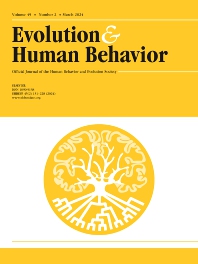Journals in Life sciences
Journals in Life sciences
Elsevier's Life Sciences collection helps researchers get comprehensive coverage and up-to-date information on the study of living organisms, their processes, and interrelationships, spanning disciplines like biology, genetics, and biochemistry, and addressing emerging trends such as genomics, biotechnology, and sustainability, essential for advancing knowledge and driving innovation in the field.
- ISSN: 0171-9335
- 5 Year impact factor: 5.4
- Impact factor: 4.5
European Journal of Cell Biology

- ISSN: 1769-7212
- 5 Year impact factor: 1.8
- Impact factor: 1.6
European Journal of Medical Genetics

- ISSN: 0301-2115
- 5 Year impact factor: 2.3
- Impact factor: 2.1
European Journal of Obstetrics & Gynecology and Reproductive Biology

- ISSN: 1090-5138
- 5 Year impact factor: 3.7
- Impact factor: 3
Evolution and Human Behavior

- ISSN: 0014-4827
- 5 Year impact factor: 3.3
- Impact factor: 3.3
Experimental Cell Research

- ISSN: 0014-4835
- 5 Year impact factor: 3.3
- Impact factor: 3
Experimental Eye Research

- ISSN: 0531-5565
- 5 Year impact factor: 3.8
- Impact factor: 3.3
Experimental Gerontology

- ISSN: 0014-4894
- 5 Year impact factor: 1.6
- Impact factor: 1.4
Experimental Parasitology

- ISSN: 0014-4800
- 5 Year impact factor: 2.7
- Impact factor: 2.8
Experimental and Molecular Pathology

- ISSN: 1872-4973
- 5 Year impact factor: 3.5
- Impact factor: 3.2
Forensic Science International: Genetics
